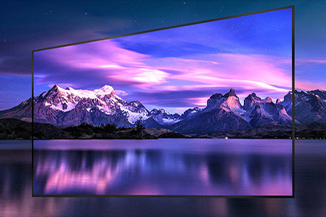Publisher: Supplier of LED Display Time: 2019-09-19 16:31 Views: 4915

Under normal circumstances, the indoor LED display generates less heat due to its low brightness and can naturally dissipate heat; however, due to the high brightness, the outdoor LED display generates a large amount of heat, which needs to be dissipated by air conditioners or axial fans. Since the LED display is an electronic product, the increase in temperature will affect the light decay of the LED display lamp beads, the working efficiency of the driver IC, and the service life of the LED display.
1. The open circuit and failure of the LED display: the operating temperature of the LED display exceeds the bearing temperature of the chip, which will rapidly reduce the luminous efficiency of the LED display, resulting in obvious light decay and damage; the LED display is mostly made of transparent epoxy resin In packaging, if the junction temperature exceeds the solid phase transition temperature (usually 125°C), the packaging material will change to a rubbery state and the thermal expansion coefficient will rise sharply, resulting in an open circuit and failure of the LED display.
Excessive temperature will affect the light decay of the LED screen. The life of the LED display is manifested in its light decay, that is, the brightness will become lower and lower until the light goes out. It is usually defined that the time when the luminous flux of the LED display screen decays by 30 is its life. High temperature is the main cause of LED display light decay and shortened LED display life. The light decay of different brands of LED displays is different. Usually, LED display manufacturers will give a set of standard light decay curves. The luminous flux attenuation of the LED display screen caused by high temperature is irreversible. The luminous flux of the LED display screen before irreversible light attenuation occurs, which is called the "initial luminous flux" of the LED display screen.
2. The increase in temperature will reduce the luminous efficiency of the LED screen: as the temperature increases, the concentration of electrons and holes will increase, the band gap will decrease, and the electron mobility will decrease. The probability of radiative recombination of the holes is reduced, resulting in non-radiative recombination (generating heat), thereby reducing the internal quantum efficiency of the LED display; the increase in temperature causes the blue light wave peak of the chip to shift to the long wave direction, which makes the emission wavelength of the chip and the excitation of the phosphor powder. The wavelength mismatch will also reduce the external light extraction efficiency of the white LED display; as the temperature rises, the quantum efficiency of the phosphor decreases, the light output decreases, and the external light extraction efficiency of the LED display decreases; the performance of the silica gel is greatly affected by the ambient temperature . As the temperature increases, the thermal stress inside the silica gel increases, resulting in a decrease in the refractive index of the silica gel, thereby affecting the light efficiency of the LED display.









